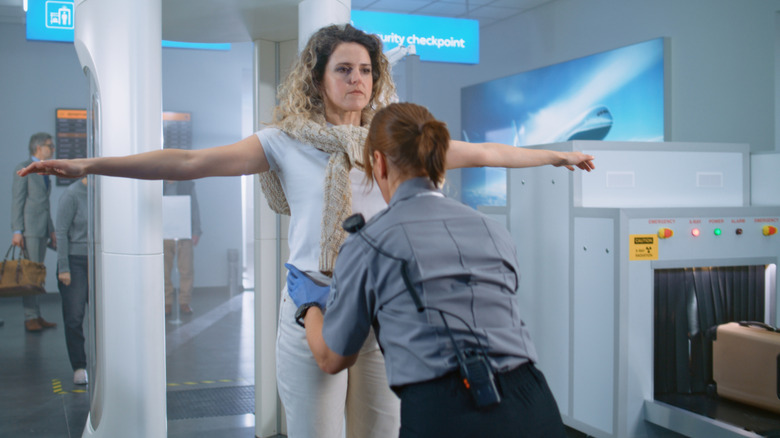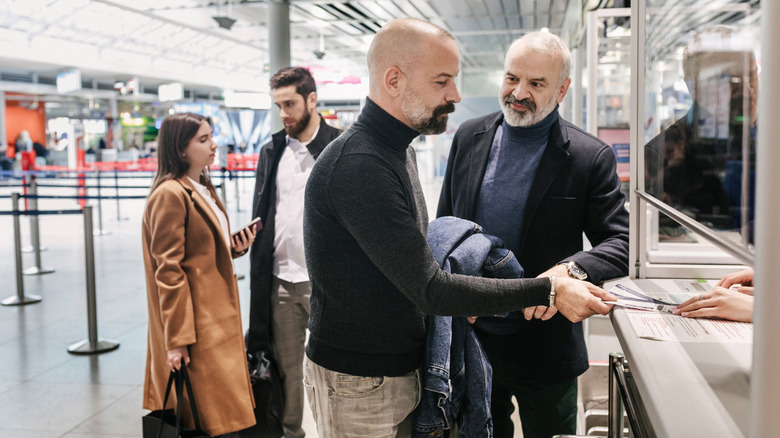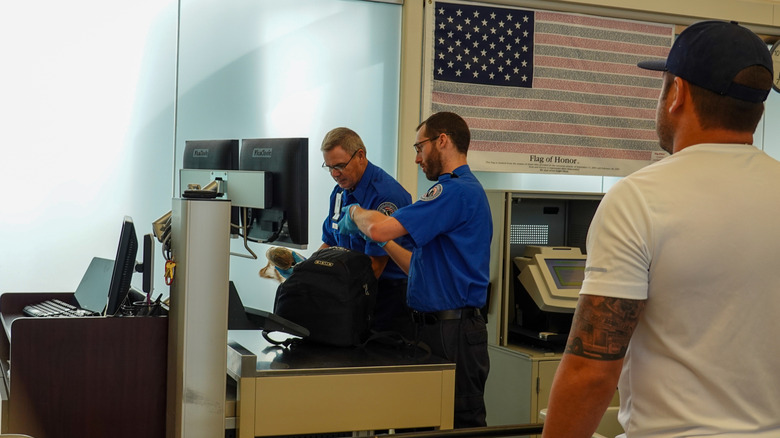The Unexpected Reason Your Hair Style Can Cause Trouble While Going Through TSA
Let's say you're trying to get through TSA with your expertly-packed carry-on in hand and your boarding pass on your phone. You place everything in the bins and smile at the agent, whose eyes flick from your face to your hair. Before you know it, you're being pulled aside for additional screening. But you're sure you don't have any restricted items, so you're running through your mind trying to figure out what could have gotten your bag flagged.
What you're probably not considering is that it could be your hair. Especially if it's bulky, pinned up, or shaped in an unusual ways, your hair style might catch the attention of a TSA agent. That's right, twisted buns, sleek wigs, particularly voluminous 'dos, you name it — some styles might be sending unintended signals.
The TSA's job is to observe things that look out of place, as security agents are trained to look beyond the obvious and pay attention to unusual details. And believe it or not, the TSA has encountered travelers hiding prohibited items in their hair. There was a case in Idaho where drugs were found concealed inside a traveler's hair scrunchies at Boise Airport. So it's not unreasonable for agents to consider hair checks as part of their security routine, especially in case of a hair style or body feature that gives off potential red-flag vibes at TSA. So, to make your trip through security a smooth one, it's important to know what to avoid.
Clues the TSA is looking out for
There are some things TSA agents immediately notice about you, even if you consider them insignificant. If you've recently switched from long hair to a pixie cut, or perhaps you just shaved off a thick beard, you may have some tan lines. Yes, there's no harm in that, but it could get you delayed at the TSA checkpoint. Based on what's known as Behavior Detection and Analysis (BDA), the TSA security agents are trained to detect behavioral anomalies, so they tend to raise questions when they see signs of recent appearance changes. To the security agents, a traveler having a sudden alteration in looks could suggest an attempt to conceal identity. As such, that gets you flagged for some special inspection you didn't sign up for.
Additionally, with facial recognition becoming more common at TSA checkpoints, changes in facial hair can affect its accuracy. A man who has a full beard in his passport photograph might encounter verification issues if he passes through security freshly clean-shaven. This could ultimately lead to a close manual review carried out by staff. Something as minor as unrelated skin tones or awkward hair accessories can in fact spell trouble too. And things might even get worse if combined with red flags like unusual travel patterns or one-way tickets, giving more reasons for further questioning. No doubt, it'd help to familiarize yourself with TSA tips that can get you through airport security like a breeze.
Saving yourself the hassle during TSA screening
If you have long hair, it's wise to leave it down or let it be in a loose style on screening day. If your hair is free of accessories and keeps your head shape clear, you'll most likely have no trouble going through security. Styles like braids, twists, or loose ponytails are typically okay, as long as they don't contain pins, wires, or other decorative pieces that can trigger sensors. Even if you think your clips are tiny, remember that metal is metal to a scanner. Elastic bands or cloth ties are great alternatives, but if you must use clips, it'd be better to keep them in your bag until after screening, and put them back on afterward.
Also, if you're an extension or wig lover wondering what might go wrong with your wig at TSA checkpoints, well, not so much. The process is often straightforward. But be aware that bulkier or unusually styled units might lead you to some pat-down sessions. Having the same color of wig as the hair color in your passport is also essential. Although TSA agents would ordinarily not ask you to take off your wig except when absolutely necessary, they might ask to feel around your hair if they're unable to clear the area visually or with a handheld scanner. If needed, you can politely request respectful handling; you're entitled to private screening or a passenger advocate, and you can even be accompanied by a partner if you feel uncomfortable. If you recently had a major shave, it might help to have an updated photo with you or just be ready to explain yourself calmly. Here are some of the oddest things TSA body scanners might detect.


